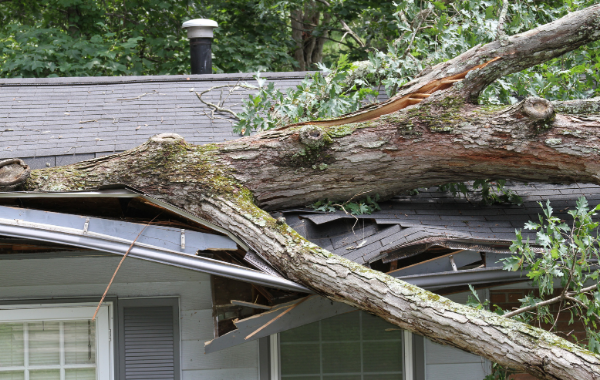
According to the Insurance Information Institute (III), wind/hail damage is the highest property claim type in terms of loss frequency.Water damage/freezing comes in second on this not so great list.With this in mind, I would like to give you a few tips to prepare your property for the upcoming winter months so that you can minimize your chances of being a part of these statistics.
Ice, snow, and wind can cause devastating damage to your home.Fortunately, on the inside of your home, there are several preventative steps you can take before winter arrives to avoid not only the expense, but also, the inconvenience that follows from a winter time property claim.Check your property’s insulation: Allowing too much heat to escape from your home can allow precipitation on the roof to melt and refreeze.
This leads to more ice build-up which can add significant weight to your roof as well as potential for ice dams.Well-insulated basements and crawlspaces also help to protect from frozen pipes.Water pipe maintenance: Be sure to confirm that water pipes in attics, crawl spaces, and outside walls are protected with insulation over the piping.You can also check your pipes for the presence of cracks and leaks.
Take this time to also confirm that water pipes to outside spigots have shut-offs engaged to prevent freezing.Have your heating system serviced: Regular servicing helps insulate you not only from the inconvenience of having your system go out in the middle of the winter but also the threat of a furnace fire.Know your water shut-off locations: Speed is critical if your pipes do freeze.You have a much better chance at containing damages if you can quickly get the water to the pipe turned off.Back-up power source: In the event of a power outage, continuous power will help prevent frozen pipes.Consider purchasing a generator to help you ensure safety and ideal temperatures inside your home.On the outside of your home, proper preparation can also save you trouble down the road.
Clean gut gutters and/or install gutter guards: Clean gutters allow melting snow and ice to flow freely.This helps prevent ice damming, which occurs when water is unable to drain.This water can seep into your home or make the gutter so heavy that it collapses.Proper sealing of doors and windows: Taking the time to check your window and door sealing can make your home more efficient by stopping cold air from entering.
If these areas are cracked, reseal them with window/door caulk.Repair steps and handrails: Everyone knows that slip and falls become much more prevalent when the temperatures plummet due to snow and ice.Take the time to ensure that your steps and handrails are sturdy and not in need of repair.Last, while inspecting the outside of your home, take time to inspect and maintain the trees on your property.Look for any low hanging branches near your house or road that may need trimmed.
Confirm that trees on your property are not beginning to rot and lose structural strength.This can help protect your home from damage as well as you from possible liability to another for damage caused by a rotten tree.Generally speaking, if your property is damaged, you are responsible for the damages.
It doesn’t matter if the tree or limb came from your property or someone else’s property.This is because a windstorm is an act of nature, it is no one’s fault.You will want to confirm you have insurance coverage to protect yourself from unforeseen losses such as this.
However, what if there is evidence that a property owner did not act reasonable in maintaining a tree that caused damage to another property? Let’s assume that a rotten tree on your neighbor’s property falls onto your property and causes damage for which your insurance carrier may pay.If your carrier feels that a third party is responsible for the damage, it may pay for your damages first, but then also go after the responsible party (known as subrogation).You may then receive some or all of your deductible back after the completion of the subrogation action.[i] How does your home stack up with these preparations in mind? As a Malay proverb suggests, prepare the umbrella before it rains.
[i] Please note that the standard for putting a property owner on notice of a potentially rotten tree varies from state to state.Some require written notice to a property owner of a rotten tree, some oral, and some do not require notice at all. The information above is of a general nature and your policy and coverages provided may differ from the examples provided.Please read your policy in its entirety to determine your actual coverage available.
Share this:FacebookTwitterLinkedInMoreEmailPrintLike this:
Publisher: Central Insurance Companies








